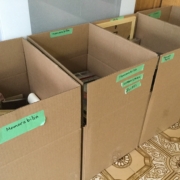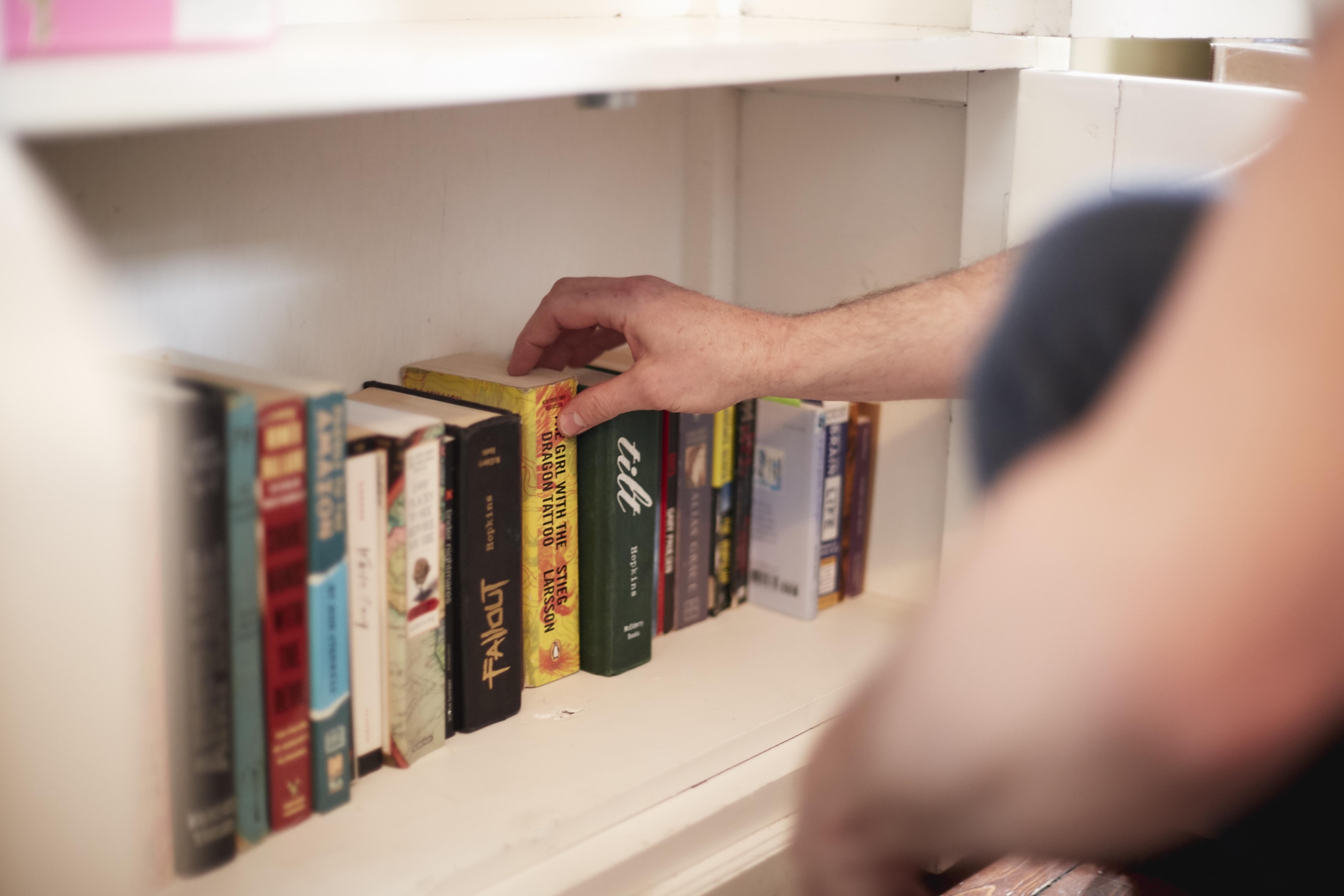7 Tips to Ease Stress When Downsizing
Thinking about downsizing? Ask yourself these questions:
Do you look around your home and think you have too much to manage?
Are your kids grown up and living elsewhere, leaving you with a large home to maintain?
Do you want to save time and money living in a smaller space?
Downsizing could be right for you if you’ve answered yes to any of these questions, whether you’re an empty nester, want to save time and money, or crave a simpler life.
No matter the reason, preparing to downsize your home involves many moving parts that require planning, coordination, decision-making, and motivation.
Here are 7 tips to make downsizing to a smaller home easier and more manageable:
- Give Yourself Plenty of Time
Downsizing is a dynamic process that requires many decisions about what to keep and what to let go of. It takes time, energy, and solid planning to carry it out successfully.
Keep in mind, you didn’t collect all the stuff in your house overnight, so it will not be a quick fix to get it all sorted out either.
To avoid unnecessary stress and overwhelm, set aside at least 2-4 weeks (2-4 months is even better) to downsize your belongings. Less rushing means better decision-making which helps ease the pressure you might feel during the process.
Recruiting family, friends, or professionals (we’ve got you covered at Simply Home Downsizing) can also help you feel calmer, more in control, and supported throughout the process of decluttering in your old home and planning for your new one.
- Create a List of Your Essentials
When downsizing it’s important to consider what items you really want and need to bring to your new home.
The best way to determine what your “must-bring” items are, is to create a list with two columns. One column for Essentials (clothing, toiletries, furniture, linens, appliances, tech, etc.), and the other column for Non-Essential & Important (memorabilia, photos, décor, collections, etc.). Place the list in an accessible location so you can easily add or subtract items as you sort through the items in your home.
Downsizing is a great time to take stock of what you own to determine which items you use, need, or love. Are your sheets looking a bit worn? Do you have old devices stashed away in a drawer? Are there chipped unused dishes on your shelf?
This is a great time to let go of items that no longer serve you, so you can make space in your new home for what does. Remember your end goal – enjoying your new smaller home.
- Set Up a Sorting System in Every Room
As you go through your belongings, there will be many decisions to make. To stay on track and organized, label three boxes or bins as “Use in New Home” “Store for New Home” “Do Not Keep”. As you sort, place items into their appropriate box, doing this in every room of your home.
Some items will be easy to categorize, while others may be more challenging.
If you’re feeling stuck or unsure, ask yourself, “Will I need, use and enjoy this item in my new home?”
If you’re still unsure, you can always try the Marie Kondo method of holding up each item and asking if it sparks joy. If it does, keep it; if not, it may be time to let it go. Advice from a trusted friend, family member or trained Simply Home Downsizing organizer can also help you in the decision-making process.
Once your “Use in New Home” and “Store in New Home” boxes are complete, place them in one area to make packing easier.
PRO TIP: Don’t forget to keep suitcases and bags accessible to contain the essentials you’ll need right away in your new home.
Your “Do Not Keep” boxes require a more thorough plan, as outlined in the next tip.
- Create an “Unwanted Items” Plan
Once you know which items aren’t coming to your new home, you have several options for what to do next:
- Toss: If things are damaged beyond repair, throw them away and move on. Be discerning.
- Recycle: Self-explanatory, although you might be amazed at how much you can actually recycle.
- Donate: Someone can likely benefit from your discards if they’re in good shape. Local charities, churches, shelters, etc., accept certain donations, as do online groups such as Freecycle, Buy Nothing, or Facebook Marketplace.
- Yard Sale: Sell your unwanted items on your street to make money and connect with neighbours. Beware, yard sales are time and labour-intensive, and the payout may not be substantial.
- Sell Online: If you have items of value (furniture, art, electronics, collections), you can try selling them online through Kijiji, Craigslist, or Facebook Marketplace.
- Online Auction: Hire a company (Ex: MaxSold) to set up your virtual sale. When items sell, you get a percentage. Beware, not everything is guaranteed to sell, and the payout may be less than you anticipated.
- Pass On: If you have unwanted heirlooms, consider taking pictures of them, passing them onto family members, donating them to charity, or turning them into something useful or artful (Ex: quilt)
- Go Digital
Most homes contain plenty of paperwork, videos, and photos, which can add to the clutter in your home. As you begin the downsizing process, consider digitizing as much as you can.
Now is a good time to sort through bills, receipts, contracts, warranties, records, pamphlets, flyers, etc. Shred or recycle anything you don’t need, store what you do need in clearly marked bins (Ex: 7 years of taxes in Canada) and scan documents to decrease paper clutter.
Photos, albums, movies, and music can also be converted into digital files, which will free up space.
Whether you do this on your own (you’ll need some technical equipment to do so) or hire a digitization service or specialist, saving everything to a hard drive or to the cloud, will enable you to keep important documents and memories while managing clutter in your new home.
- Plan Your New Layout in Advance
When you move into your new home, you want to feel confident that everything you’re bringing will fit and have a purpose. Measure each room, including closets and usable wall space, to ensure your large items (Ex: furniture, appliances) work well, and the flow of your home feels right.
Whether or not you’ll have a garage, basement, or locker, you’ll want to maximize your storage. Some suggestions: create built-in storage, maximize vertical wall space, choose multifunctional furniture, add a storage bench, take advantage of hidden spaces (Ex: under stairs, cabinet doors, inside closets), and use baskets, bins, and boxes to contain clutter.
As you plan your new life in your smaller home, avoid the temptation to buy too many new items before you move. Planning how a bed, couch, or fridge will fit ahead of time makes sense, but until you get a sense of the space you’re living in, it’s hard to know what other items will work best.
Be patient – there will be time to decorate after you move in! You can start a wish list for items you’d love.
Always keep in mind why you wanted to move to a smaller home – more spaciousness and less clutter, right?
- Ask for Help from Friends, Family, or Experts
Downsizing your home is a huge undertaking and challenging to do alone. To help minimize stress, frustration, and overwhelm, ask friends and family to help you:
- Sort items into categories (Ex: all cutlery in one place, all photos together)
- Decide what to keep and what to let go of
- Remove items from your home you no longer want, use, or need
- Plan or host a yard sale to sell your unwanted items
- Measure spaces in your new home
- Digitize your photos, files, videos, and music
- Transport items to a storage unit, donation centre, recycling facility, etc.
- Pack
If you’re looking for professional support to downsize successfully from start to finish, contact us at Simply Home Downsizing.
Downsizing can be physically and emotionally challenging. These seven tips will help you declutter, sort, purge, organize, and pack more effectively, setting you up for success at each stage of your downsizing journey.
We’re always here to help you with your downsizing journey! Please reach out to us at: info@simplyhomeinc.ca

















